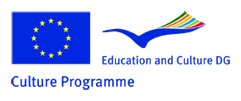|
Time Inventors' Kabinet TIK Herbarium einer Gstettn - Herbarium of a wasteland |
Helene Thümmel
|
Herbarium einer Gstettn
Im Gegensatz zum Land ist die Stadt stark strukturiert. Auf engstem Raum grenzen Gebäude, Straßen, kleine Grün- und Rasenflächen, Hecken und Mauern aneinander, es gibt Bauruinen und „Gstetten“, sowie meistens einen Fluss oder See. Diese starke Strukturiertheit ist unter anderem eine der wichtigsten Faktoren für den hohen Artenreichtum an Pflanzen (und auch an Tieren) innerhalb einer Stadt, denn gegen die Erwartungen der meisten Stadtbewohner sind Städte viel artenreicher als deren Umland. Die Natur des Umlandes, die von den meisten Stadtbewohnern als frei und unbeschadet wahrgenommen wird, ist oft von Monokulturen beherrscht und wird intensiv mit Giften behandelt und überdüngt. In Städten keimt es dagegen zwischen Pflasterritzen, es wachsen Kräuter und Moose, in jeder Baulücke, am Straßenrand, am Bahndamm und zwischen Industriegebäuden findet man ursprüngliche Nutz- und Heilpflanzen, Raritäten, die anderswo schon am Aussterben sind, sowie viele andere Besonderheiten. Da ist Natur, mitten in der Stadt. Mir war es möglich auf den untersuchten Flächen in Eggenberg fast 200 verschiedene Pflanzenarten zu dokumentieren. Herbarium of a wasteland Compared to the countryside, the city is very structured. In a very concentrated area, we find buildings, streets, little green spots and meadows, hedges and walls, there are ruins and wastelands, a river or a lake. This sutrcuturedness is one of the crucial factors for the abundance of species of plants (and also animals) in the city; against the expectance of most city people, biodiversity is higher in the cites than in the country side. The nature of the hinterland that is thought to be free and undamaged, is mostly dominated by omno cultures and treated heavily with poison and fertilizer. In the city as a contrast, plants may grow in little gaps in the street, medicinal herbs and moss grow in each empty space, on railway embankments and between industrial buildings, we find rarities, that have been extinct otherwise. There is nature inmidst the city. I found more than 200 different plants on the investigated wasteland. The project TIK (Time Inventors' Kabinet) will take place over 2 years, as a collaborative action by 3 core partners (OKNO in Brussels, COL-ME in Bratislava and ESC in Graz) and numerous other contributors. It is supported by the EACEA Culture Programme 2007-2013. |
|
____________________________________________________________________
Support: This project is supported by the cultural departments of the City of Graz, the Styrian Government and the Austrian Federal Ministry for Education, Arts and Culture  This project has been funded with support from the European Commission. |
ESC-Newsletter abonieren: email an: labor[at]mur.at
for our ESC-newsletter email to: labor[at]mur.at
